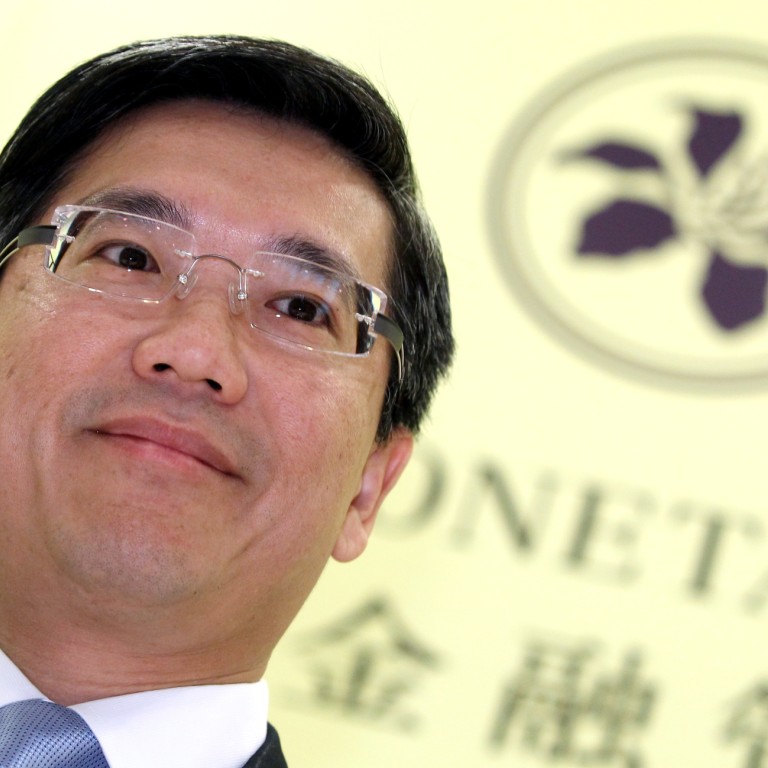
HKMA sees little risk in bank loans to China
Most of the HK$2.6tr in lending goes to big state and global firms and the HKMA has taken steps to ensure liquidity in the system
Hong Kong Monetary Authority deputy chief executive Arthur Yuen Kwok-hang yesterday addressed concerns about Hong Kong banks' HK$2.6 trillion exposure to mainland borrowers.

He said that of the HK$2.6 trillion in lending, half went to giant state-owned enterprises and 31 per cent to the mainland arms of large international firms with mainland operations. Only 19 per cent was to the mainland's private enterprises, the borrowers most exposed to a downturn in the economy.
Yuen also clarified that HK$970 billion of the loans were from the Hong Kong branches of big international banks, which can tap into the resources of the group balance sheet if many of their mainland loans go bad.
Hong Kong-incorporated banks lent HK$830 billion to mainland entities, excluding trade finance - far less than the headline figure of HK$2.6 trillion. The HKMA has taken steps to ensure banks do not suddenly withdraw massive amounts of capital from the Hong Kong-mainland market.
"We don't want a situation, when [banks'] liquidity position changes, we don't want you to cut back your loan book right away. This was what we saw in 2009, which was when banks came under a liquidity squeeze elsewhere, they cut back their loans … [which] exaggerated the boom-and-bust cycle," Yuen said.
In that vein, the authority introduced its stable funding requirement in January this year, which requires banks to secure additional long-dated funding if their loan book grows more than 20 per cent per year.
The HKMA said it had repeatedly cautioned banks that liquidity risk, in particular US dollar liquidity, was a top concern for the banking system in the city.
After seeing loan growth hit an annualised 44.5 per cent in January, the authority pushed back the date for reviewing banks' loan books from the end of March to the end of June. This was done to capture more of banks' loan growth so that the stable funding requirement has more bite.
The requirements are somewhat controversial among banks. "Every time we write a new loan, you have to figure out how to address the stable funding requirement. It's all about making lending more onerous," said a head of Asia-Pacific loan syndication for a European bank.
Yuen characterised such feedback as routine industry grumbling. "Bankers do not like the stable funding requirement. No one likes it because it makes lending more expensive for them. You think about it. Is that something that would be really embraced by the banks?" he said.
